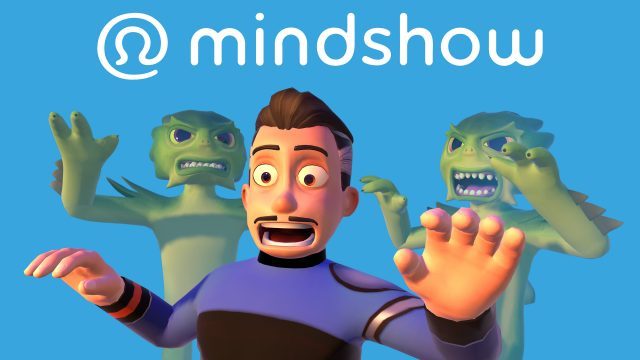Mindshow, the app that lets you create animated movies with the use of a VR headset, is now available for general release on Steam following its invite-only alpha. Letting you essentially jump into an avatar, record physical movements, simulate facial expressions, and record audio, the imagination is truly the limit on what stories you can tell.
Revealed by Mindshow Inc (ex-Visionary VR) at last year’s VRLA Summer Expo, the company has since added several tools, settings, and flushed out its crazy cast of characters ranging from a talking Twinkie to a body building piece of lettuce. Some characters even have the ability to record audio with voice modifications, giving anyone the chance to inject a little weirdness into their creations without being expert impressionists—well, a little more weirdness anyway.


One of the cool aspects about Mindshow is that it’s not only for making 2D movies, but functionally acts as a platform that lets you watch others’ performances from within VR. With the ability to share your own VR shows and view others’, you can remix anything shared publicly through Mindshow and create something new. To boot, the app will soon be featuring shows from people like Reggie Watts and YouTube viral star Tay Zonday every day of September.
While specifically stating support for HTC Vive, the app uses SteamVR, so it works nearly as well with Oculus Rift given the three-sensor, room-scale setup. Admittedly, Mindshow is optimized for the Vive, so some controller functions aren’t as easy to use with Oculus Touch despite the fact that every button is mapped correctly.
The user interface is pretty simple, letting you select your action with one controller; teleport, record video, hop-in to avatars, rotate and move props and characters. The other controller is dedicated to spawning menu items like characters and props, and also a progress bar and play button so you can rewatch performances.
There’s a few hard caps on avatar numbers (max 3 in each scene) and props, and each discrete recording cuts off within 30 seconds. The recording cap is true for strictly ‘VR shows’, but longer 2D shows can be created by recording the action with the camera tool and generating multiple cuts, then stringing them together with a film editing software. The show below, which takes the fake documentary-style popularized by the The Office and throws it into space, was built using basic tools and stock backgrounds.
It took me about 45 minutes to create a 2-minute show (it’s so bad I’ll only link it in the confines of parenthesis: here). That may seem like a long time, but quick cuts and short dialogue mean you have to teleport around and delete the recorded actions of avatars and record new ones. Then you need to import, cut and string all of the clips together before you can export to a video file. Shorter clips that are under the 30-second recording cap can however be shared directly to YouTube from within the app by linking your account.
One problem I ran into while making my half-brained movie was audio. The integrated mic on the Vive is just plain bad, and a clip-on external mic would go a long way in terms of audio quality. Rift is slightly better in that aspect, but I don’t have a three sensor setup, so I couldn’t get the perfect shot I was looking for due to inconsistent controller tracking. Otherwise, there were only a few hiccups when trying to interact with props, as they sometime didn’t like to stay put.
For the pros: if you’re good at video editing, you can even take advantage of the green screen background that lets you chroma key your creations into anywhere imaginable. Check out the movie below made by Mindshow to see just how crazy things can get.
Creating with Mindshow was an awesome and eye-opening experience. It’s hard to imagine that I can now direct and record any idea or skit floating through my head, however bad and half-brained they may be. There are some definite limits to what you can produce, but those sorts of bottlenecks are sure to create their own brand of viral gags that would otherwise be impossible (or expensive) outside of a VR headset.



